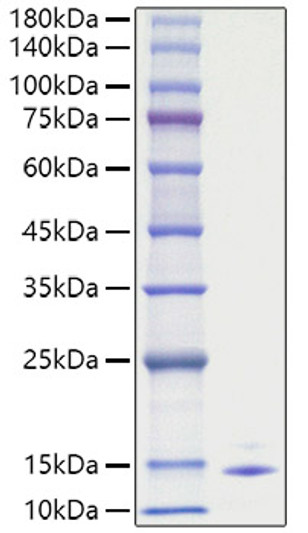| Tissue Specificity | Expressed in the follicular fluid (at protein level). T-cell and macrophage specific. |
| Post Translational Modifications | N-terminal processed form RANTES(3-68) is produced by proteolytic cleavage, probably by DPP4, after secretion from peripheral blood leukocytes and cultured sarcoma cells. N-terminal processed form RANTES(4-68) is produced by proteolytic cleavage by cathepsin CTSG. The identity of the O-linked saccharides at Ser-27 and Ser-28 are not reported in PubMed:1380064. They are assigned by similarity. |
| Function | Chemoattractant for blood monocytes, memory T-helper cells and eosinophils. Causes the release of histamine from basophils and activates eosinophils. May activate several chemokine receptors including CCR1, CCR3, CCR4 and CCR5. One of the major HIV-suppressive factors produced by CD8+ T-cells. Recombinant RANTES protein induces a dose-dependent inhibition of different strains of HIV-1, HIV-2, and simian immunodeficiency virus (SIV). The processed form RANTES(3-68) acts as a natural chemotaxis inhibitor and is a more potent inhibitor of HIV-1-infection. The second processed form RANTES(4-68) exhibits reduced chemotactic and HIV-suppressive activity compared with RANTES(1-68) and RANTES(3-68). May also be an agonist of the G protein-coupled receptor GPR75, stimulating inositol trisphosphate production and calcium mobilization through its activation. Together with GPR75, may play a role in neuron survival through activation of a downstream signaling pathway involving the PI3, Akt and MAP kinases. By activating GPR75 may also play a role in insulin secretion by islet cells. |
| Protein Name | C-C Motif Chemokine 5EocpEosinophil Chemotactic CytokineSis-DeltaSmall-Inducible Cytokine A5T Cell-Specific Protein P228Tcp228T-Cell-Specific Protein Rantes Cleaved Into - Rantes(3-68 - Rantes(4-68 |
| Database Links | Reactome: R-HSA-380108Reactome: R-HSA-418594Reactome: R-HSA-6783783 |
| Cellular Localisation | Secreted |
| Alternative Protein Names | C-C Motif Chemokine 5 proteinEocp proteinEosinophil Chemotactic Cytokine proteinSis-Delta proteinSmall-Inducible Cytokine A5 proteinT Cell-Specific Protein P228 proteinTcp228 proteinT-Cell-Specific Protein Rantes Cleaved Into - Rantes(3-68 - Rantes(4-68 proteinCCL5 proteinD17S136E proteinSCYA5 protein |
Information sourced from Uniprot.org







